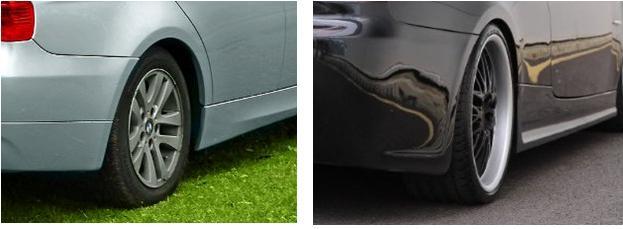Wheel Offset – What Should I Get?
So you’ve shopped around for new wheels, used the iShopWheels Tool here to see what they’ll look like on your car, you’re ready to pull the trigger on your new wheel, and you go to pick out the size you want and see multiple different options.
18×8.5″ ET -15
18×8.5″ ET+20
18×8.5″ ET+35
You probably know that the first number represents how big the wheel – in this case 18 inches. The second number represents how wide the wheel is, 8.5 inches, but what does “ET” and the number after it mean?
That number represents the offset of the wheel. You’ll hear and see ET and offset used interchangeably. ET stems from the German word “einpresstiefe” which translates to “offset” in English.
Offsets can be tricky and going with an ET of -15 versus an ET of +35 is going to look drastically different on your car even though they are both 18 inch wheels. And yes, keep in mind that offsets can be negative too! So what does all of this mean?

The definition of an offset is simply the distance between the hub mounting surface and the center line of the wheel. To make it as simple as possible, the lower the offset, the further the wheel is going to stick out from the fender and body of the car.
Let’s look at an example. The OEM stock wheels on your car are 17×8 ET+38 and the new wheel you want is 18×8 ET+15. Since the width of your wheel is the same at 8 inches, the difference is going to come from the offset of +38 versus +15. Offsets are measured in millimeters, so therefore simply subtract the new offset from the old offset.
38mm – 15mm = 23mm
In this case your wheel will end up sticking out further towards the outside of the car/fender by 23mm. Remember that if you’re look at changing to a lower offset to push the wheel out towards the fender and you car is lowered, it can rub on the inside of your fender, which is not good! Be sure to take some measurements to see how much clearance you have before running into the inside of the fender.
Ok, one more example that’s a bit more complex. The OEM stock wheels are 17×7.5 ET +30 and the new wheel is 19×9 ET+20. Now we have two variables we need to consider: width and offset.
This is where wheel companies make it a pain for us because the wheel width is measured in inches and the offset is measured in millimeters so we need to do some conversions, ugh!
Starting with the wheel widths, the total increase in width is increasing by 1.5 inches. (9 – 7.5 = 1.5) There are tons of conversion tool available if you search on Google. Using this tool we can see that 1.5 inches equates to 38.1mm, which I’m going to round to 38mm. Now remember that the total width is increasing by 38mm, which means you’ll have an extra 19mm on each side of the wheel. Using the method above to calculate the difference in offset impact we know that the wheel will stick out an additional 10mm. (30mm – 20mm = 10mm)
The offset difference plus the wheel width difference on one side is how much further out your wheel will stick out from the fender. 10mm + 19mm = 29mm.
But wait…there’s more to consider! You have an additional 19mm on each side of the wheel due to the width of the wheel. If there’s 19mm of less clearance on the suspension side of the wheel and the change in offset pushed the wheel out 10mm towards the fender, you will end up with a total of 9mm of less clearance on the suspension side. (19mm – 10mm = 9mm) This is very important to factor in to make sure you have room without rubbing on your suspension parts.
To sum up, wheel offsets make a big difference in the way your car will ultimately look and shouldn’t be an afterthought. Spacers are another option to push out wheels towards the fender, but that’ll have to wait until a different post… 🙂